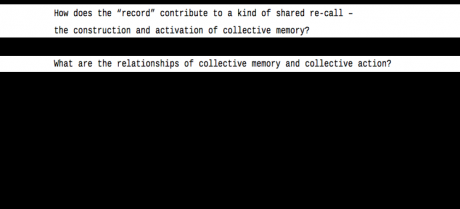Paper PRESENTED AT ‘Post-Autonomia’ conference,
SMART Project Space, University of Amsterdam,
By M.Karagianni & V.Semou, Amsterdam 2011
/////ABSTRACT: In this paper we argue for an art practice that is autonomous in terms of its mode of production and we examine the re-enactment and appropriation of recordings as one of the artistic methods of resistance.
Our case studies refer to the practice of 2 artistic-political collectives: the Mountain Theatre in Greek resistance to nazis occupation in the 40’s, and the contemporary art collective BLW in California. In the former case, guerilla fighters took part as amateur actors, the appointed time schedule of each performance was adjusted so that most people could join, while the play was adapted to illustrate personas found in the villages for integrating a revolutionary message within everyday life. In the latter, the collective involves the memorization of significant recordings in the history of radical media speeches by inviting audience members to publicly re-enact them. Through this practice, the artists recover the power of speech in a culture where oral competence is displaced by media forms.
Inspired from the above mentioned practices, our discussion in the paper shifts to our own practice and experience as artists within the contemporary milieu of activism in the Netherlands. Digital and analogue recordings of previous actions join the live broadcasting of the voices and demands at protests that address social problems, such as housing shortage and budget cuts. Unlike the saturation of media archives that stay inactive for passive viewing/ listening, the re-use of our recorded material and live stream during protests show the continuation of the struggle that can result in the empowerment of peoples’ engagement.
[For more information about the call and the program of the conference click here.] /////——————————————————————————————————————————–
[If interested, you can find the paper here]
